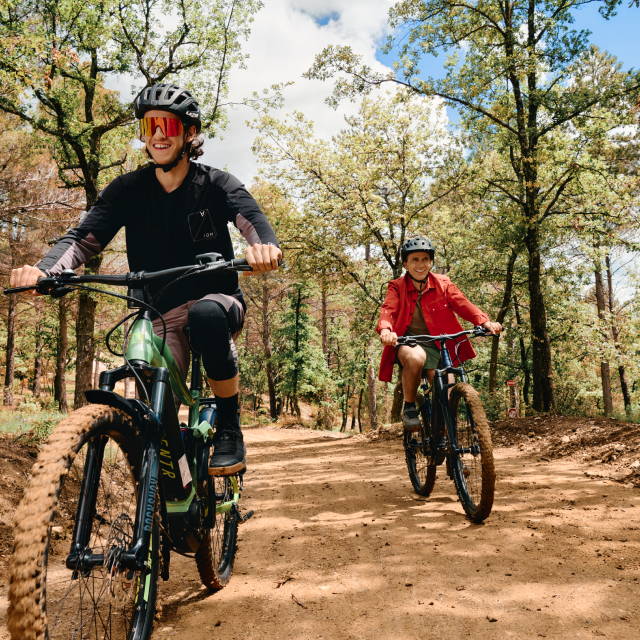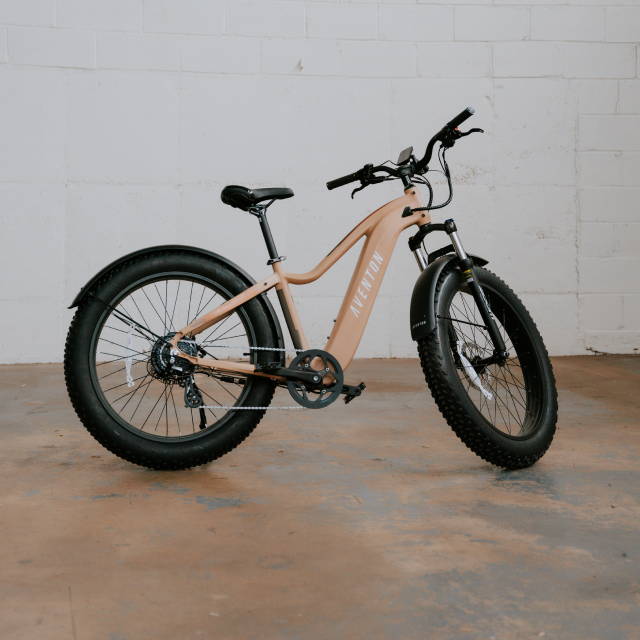Class 1 vs. Class 2 vs. Class 3 E-Bikes: What Sets Them Apart?
Written by: Rémy Rossi | December 20, 2024 | Time to read 5 min
Class is in session. I’ll teach you all about the differences between Class 1, 2, and 3 electric bikes so you can find your dream e-Bike and stay within the rules.

More about the Author: Remy Rossi
Rémy Rossi is a bike writer, mechanic, and educator who got his start in community-based bike shops and co-ops. With a decade in the industry, he still wrenches on bikes when he can and plays bike polo on a fixie.

If you’re frazzled about the differences between e-Bike classes, you’re not alone. This new standard of categorizing electric bikes is straightforward on the surface, but governments and bike brands have their own interpretations. Between e-Bike class limits varying from city to city and e-Bike manufacturers fudging the rules, it’s like the Wild West out there. I’ll break down what sets each e-Bike class apart.
👋 Do you know Upway?
Three-class e-Bike system

This system came about to standardize e-Bikes and allow them to be effectively regulated— after all, they are faster than human-powered bicycles. States (and local municipalities) decide how e-Bikes can be used on streets and bike paths and it was time to modernize the definition of e-Bikes, especially how they differ from other motorized vehicles like mopeds, motorcycles, and cars. Right now, more than 36 US states have adopted the three-class e-Bike system on which to base their legislation.
Some states are still lagging behind in officially adopting the three-class system, but the standard is here to stay and e-Bike advocates, riders, and brands are happy with the clear definitions. Consumers have to choose which e-Bike class is right for them. Many trails and paths are off-limits to throttled Class 2 e-Bikes or faster Class 3 e-Bikes, so it’s important to check your local regulations.
Class 1 e-Bike
Find your dream Class 1 e-Bike at Upway:
Class 2 e-Bike
The throttle feature and more motorized feel, however, mean Class 2 e-Bikes are more heavily regulated. Many areas that welcome standard bikes and Class 1 e-Bikes may block the use of throttled Class 2 e-Bikes.
Class 3 e-Bike

Class 3 e-Bikes can be a good idea for riders who ride in areas where they can go fast safely, like wide paths or open roads. The faster speed allows you to keep up with city car traffic, which can be a plus for commuters. But just like Class 2 models, Class 3 e-Bikes can be restricted from some trails because of their extra zest.
🤝 Why you can trust us for buying an e-Bike?
- Fair Prices: Find your next e-Bike at up to 60% off retail, in new or like-new condition.
- Quality You Can Trust: Each e-Bike is meticulously certified by our expert mechanics and backed by a 1-year warranty.
- Convenient Delivery: Enjoy doorstep delivery within a week. Not completely satisfied? Take advantage of our 14-day return policy.
“Classless” e-Bikes
Rules are meant to be broken— or at least, frequently bent. Not all e-Bikes for sale neatly fall into the three e-Bike classes. Some e-Bikes are sold as Class 2 e-Bikes with a throttle (top speed of 20 mph) but can be unlocked to Class 3 with a maximum speed of 28 mph. Now it’s an e-Bike that’s both Class 2 and Class 3. It’s not necessarily illegal but the rules can get hazy pretty quickly. If brands are marketing speeds of 30+ mph, that e-Bike isn’t part of the three-class system.
At the end of the day, it’s your responsibility to ride safely, for you and the riders and pedestrians around you. Look up your local regulations to ensure you’re always respecting the trail rules. I consider myself a bit of a cyclist anarchist, but even I know that e-Bike class and speed limits aren’t arbitrary, simply there to cramp your style. Fast or throttled e-Bikes may lead to faster rates of soil erosions on trails and have a higher potential for accidents and injury.
Which electric bikes have the best pedal assist? No class of e-Bikes is necessarily better than the others— it depends on your preferences and local e-Bike rules. Speed demons may love fast Class 3 e-Bikes while other riders appreciate the moderate, natural-feeling assist of Class 1 e-Bikes.
Key Takeaways
- Three-Class System Defined: E-Bikes are classified into three categories—Class 1 (pedal assist up to 20 mph), Class 2 (pedal assist and throttle up to 20 mph), and Class 3 (pedal assist up to 28 mph)—to standardize their regulation and use.
- Local Regulations Matter: Different states and municipalities have varying rules on where each class of e-Bike can be ridden. Always check local laws to ensure compliance.
- Consider Your Riding Needs: Class 1 is trail-friendly and versatile, Class 2 offers throttle convenience, and Class 3 is best for speed on open roads or city commutes.


